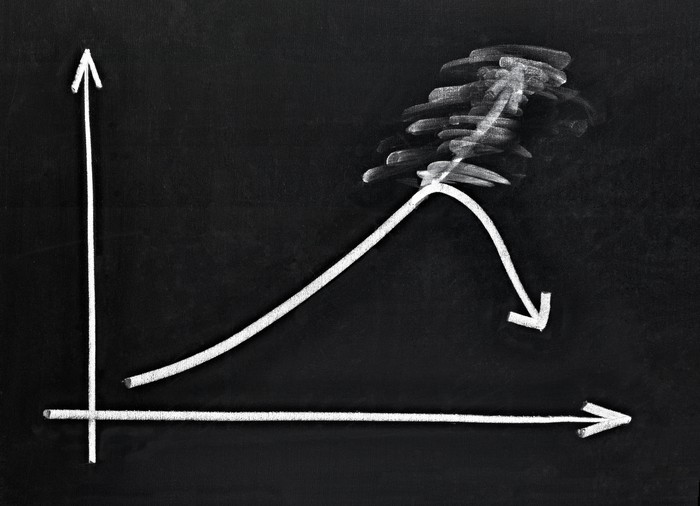
Source: Wikimedia Commons.
One of the hardest things to understand as an investor is when a company's business seems to do well but its stock falls. That's the situation that shareholders in discount retailer Big Lots (BIG +0.00%) are currently going through, with Friday morning's release of fiscal third-quarter results inspiring a sell-off in its shares even though the company managed to keep growing and raised its guidance for the holiday quarter. Yet because Big Lots fell short of what analysts had expected to see from the retailer during the past quarter, traders appear to have ignored any hint of a bounce-back and quickly sent the stock down more than 6% in pre-market trading. It was down by 14% as of 11:15 a.m. Let's look at Big Lots' results and whether its positive guidance should reassure fearful shareholders rather than spurring them to sell.
Small gains for Big Lots
Focusing on Big Lots' backward-looking numbers, you can forgive short-term traders for their knee-jerk reaction to its quarterly report. Big Lots reported a loss from continuing operations of $0.06 per share, which was a penny worse than most had predicted even though it fell toward the better portion of the guidance range the company had provided in last quarter's report.
Revenue from continuing operations climbed a scant 0.2% to $1.11 billion, falling short of the $1.12 billion investors had hoped to see. CEO David Campisi highlighted the fact that Big Lots managed to score comparable-store sales growth of 1.4%, marking the third quarter in a row that comps have come in positive.
Big Lots pointed to its efforts to widen its product offerings as a substantial contributor to its improved results recently. Moves like expanding the amount of food you'll find at Big Lots locations, as well as implementing a lease-to-own furniture sales program and striking a better balance between value and quality among its product mix generally, have helped increase Big Lots' appeal to its core customer base, according to the company.

Source: Big Lots.
Moreover, Big Lots has shared its recent success with shareholders. The company continued to pay its modest 1.4% dividend yield, but more impressively, it spent $115 million on buying back its stock, using up nearly all of its $125 million authorization approved in August. Since the quarter's end, Big Lots went ahead and completed the program, paying a bit more than $44 per share on average to buy back 2.8 million shares.
What will the future hold for Big Lots?
On a more positive note, Big Lots gave some positive guidance for the current quarter. The company widened its earnings-per-share outlook for the holiday quarter, predicting $1.70 to $1.80 per share in income from continuing operations. Yet with most investors already expecting earnings near the upper end of that extended range, the boost didn't have as much impact as it ordinarily would have. Moreover, merely affirming fiscal 2014 comps growth of 1% to 2% and full-year earnings of $2.40 to $2.50 per share didn't reflect a huge amount of optimism that Big Lots would be able to finish the year on a strong note.
Another concern among investors is whether Big Lots will be able to sustain its share price without further buybacks. At least for now, Big Lots hasn't created a new repurchase authorization to replace the just-completed program, and even though that program only covered about three days' worth of typical volume, short-term-minded traders fear the downward pressure of no longer having the buying support that the program created.
Finally, Big Lots faces plenty of competition, especially as the holiday season heats up. So far, it appears that 2014 will once again involve substantial promotional discounting among retailers not only in the discount arena but also from more mainstream department stores. Even with some positive economic trends helping the U.S. overall, the lower-end customers on whom Big Lots depends haven't necessarily seen the full positive impact of lower unemployment amid almost nonexistent wage growth. If bigger competitors start to encroach on its space, Big Lots has to respond with moves to differentiate itself from its peers and drive more business.
Big Lots has continued to put in a modest recovery, but it needs to accelerate its efforts if it wants to keep up with its peers in the discount retail space. With so much activity among dollar-store rivals and big-box retailers, Big Lots has to keep improving to convince shareholders that its turnaround will last.






